How to Sell Art Like a Best Seller
Selling art is a competitive business and it can be hard to make your mark. Some artists seem to reach best seller status so easily and make it look like no work at all. So what are their secrets to selling art?

The spectacular ‘Marnie wall’ in our Melbourne gallery was dedicated to her ever popular abstracts.
It’s actually not luck, but a few smart practices that become second nature. We spoke to one of our most popular artists, Marnie McKnight, about what she implements in her practice that keeps her work fresh and thriving. She broke it down into a few easy-to-follow points.
1. Keep your passion alive
Chances are, you’re probably doing this anyway. Why create if you don’t love what you’re doing? It’s important to check in every now and then to make sure you’re still feeling the joy. According to Marnie, the joy she feels comes through in her works. “The pieces I love painting the most always seem to sell more quickly. I think people can feel the happiness that the process gives me and it translates into a more sellable work.”
After all, who doesn’t want artworks that hum with the joy and passion of the artist who created them?
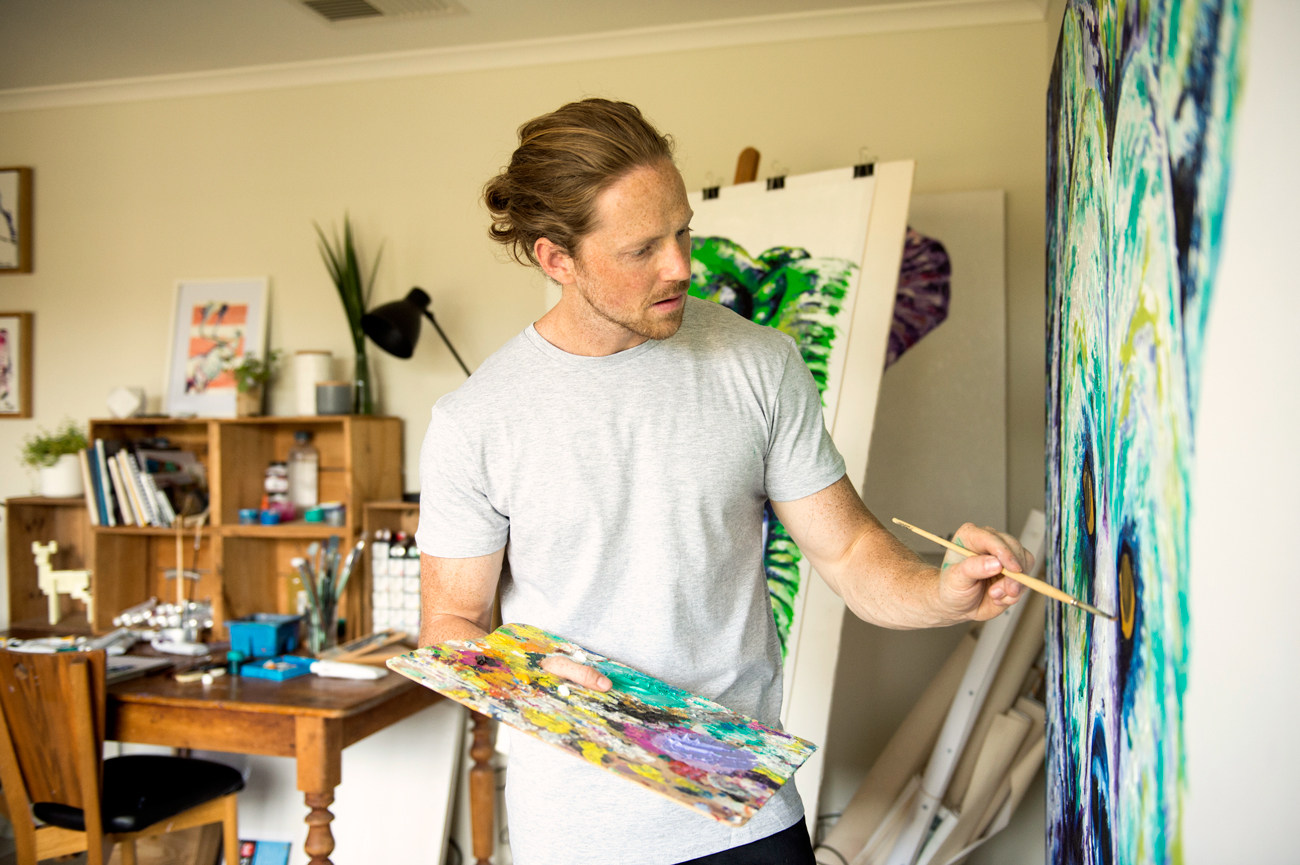
Sell art like best seller Aidan Weichard and let the joy flow through into your work.
2. Give collectors options
There’s a certain satisfaction to selling those eye-catching large artworks – but they’re not always in a collector’s budget. Sell art at a range of prices and sizes to make it more accessible to collectors. As Marnie puts it, “You wouldn’t go into a clothes shop if they only had two styles of shirt – people like options and are more likely to purchase if they have a few different sizes and price points to choose from.”
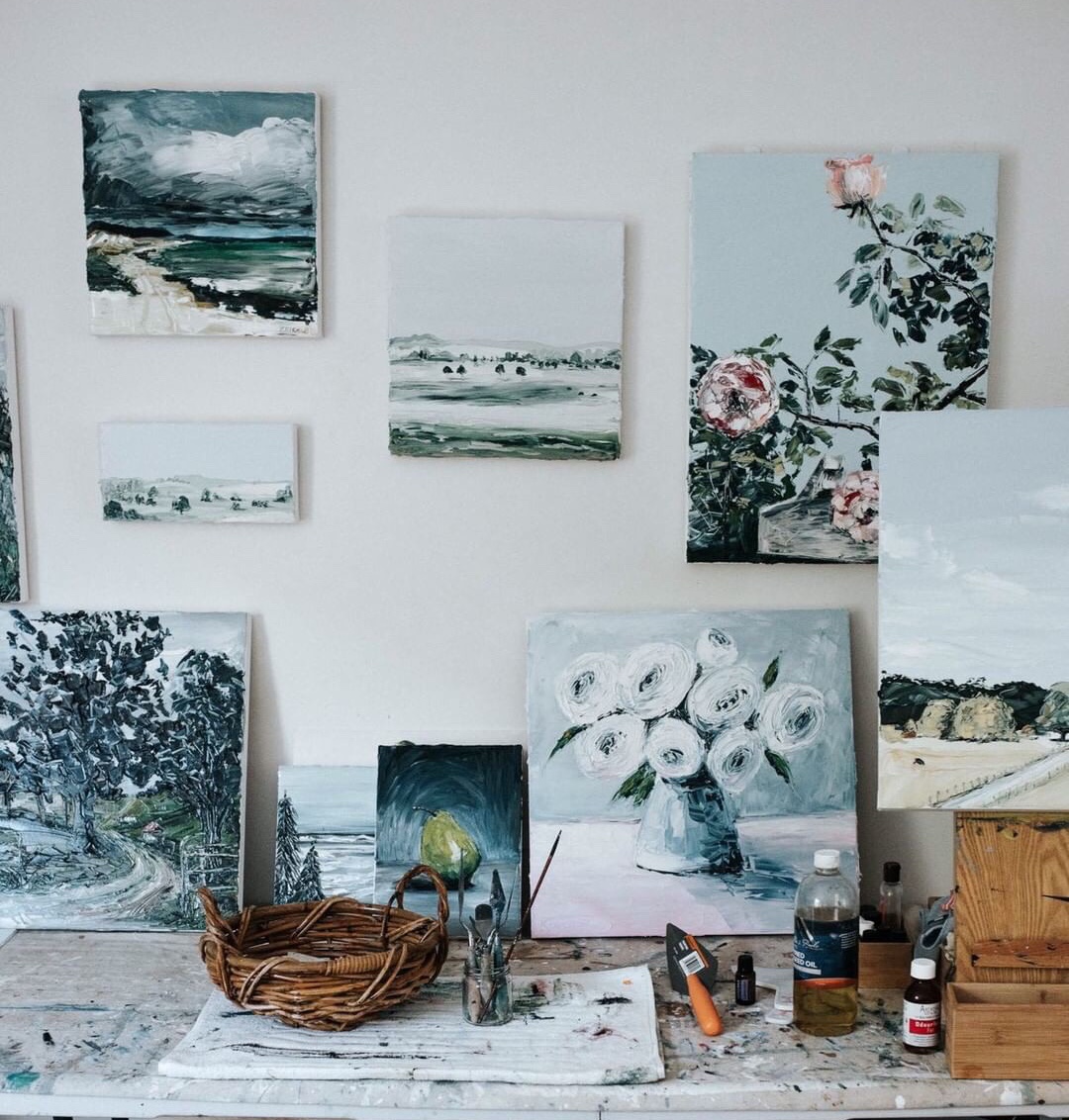
Michelle Keighley has a range of sizes and price points for collectors to choose from! And what she doesn’t have available, she’s happy to create as commissions.
3. Sell art ready to hang
Time and time again collectors have asked us if an artwork was ready to hang or framed. Make life easier for a collector by selling works that can go straight from the box and onto their wall with no intermediate steps required. All that’s required for a piece to be considered ready to hang is a wire across the back. Keep in mind to present it professionally – we’ve seen some crafty hanging mechanisms, from cheap string to shoelaces, but these don’t always match the quality of the art. Put your best foot forward with strong wire that is neatly attached to the canvas using D-rings.
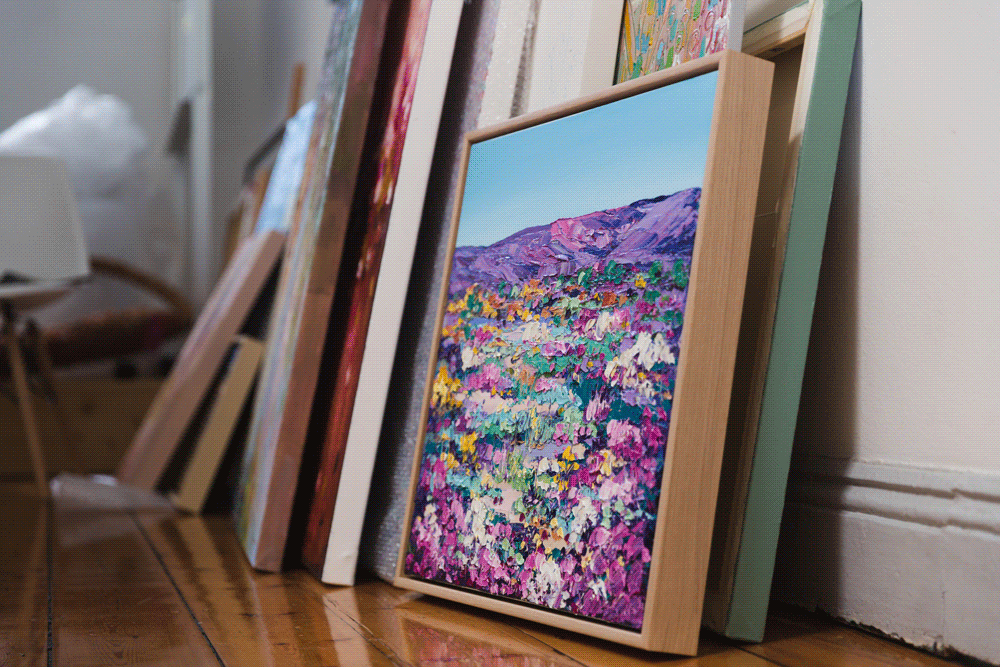
Add that extra finishing touch with professional framing, like popular artist Angela Hawkey.
Framing is a much-debated topic amongst artists when they sell art. Do collectors prefer the freedom to choose their own frames or do they enjoy saving time by purchasing already framed works? We’ve noticed that most of our collectors are drawn to works already framed – so long as the frames are well-made and neatly presented.
In Marnie’s experience, paying for her works to get framed has been a valuable investment. “I know myself that I have bought a rolled canvas and after 3 years, it is still in its tube.” She explains, “If a painting is delivered framed and complete, the collector just has to hang the work and they have instant gratification. And every painting hanging on a wall is like a little ad for your work. It may cost a bit more for framing, but I find it is worth it.”
4. Be reliable, friendly and open to opportunities
When it comes down to it, selling art is a business. And like any business, how you interact with collectors and your network goes a long way. With our in-house Interior Designer Alexandra bringing in lots of new trade orders, with a variety of crazy timelines and unusual requirements, it’s vital to stay reliable and open. A great example is when Kat Las took on a crazy project to paint over a dozen artworks for an office fit out. It was a lot of work and a mammoth task, but she handled it with aplomb and made the task seem like a breeze. Even though it must have been a stressful and overwhelming project, she remained calm under the pressure and finished the works on schedule.

It was a huge project for Kat Las – over a dozen paintings for one large office! But she proved her reliability and was a pleasure to work with.
Follow the advice of our award-winning customer service team, who believe that every time you meet someone, you should treat it like an interview. Put your best foot forward and give customers a positive experience that encourages them to come again. Good customer service shines brightest not when things run smoothly, but when tough situations arise. Handling these with grace and respect will turn upset collectors into those who have faith and come back for more.
5. Keep it fresh
There’s a misconception that once you’ve found a style that resonates with collectors, you shouldn’t stray away from it. But that’s not necessarily true. Much like collectors can sense the joy in an artwork, they can feel when an artist is getting tired of painting in the same way.
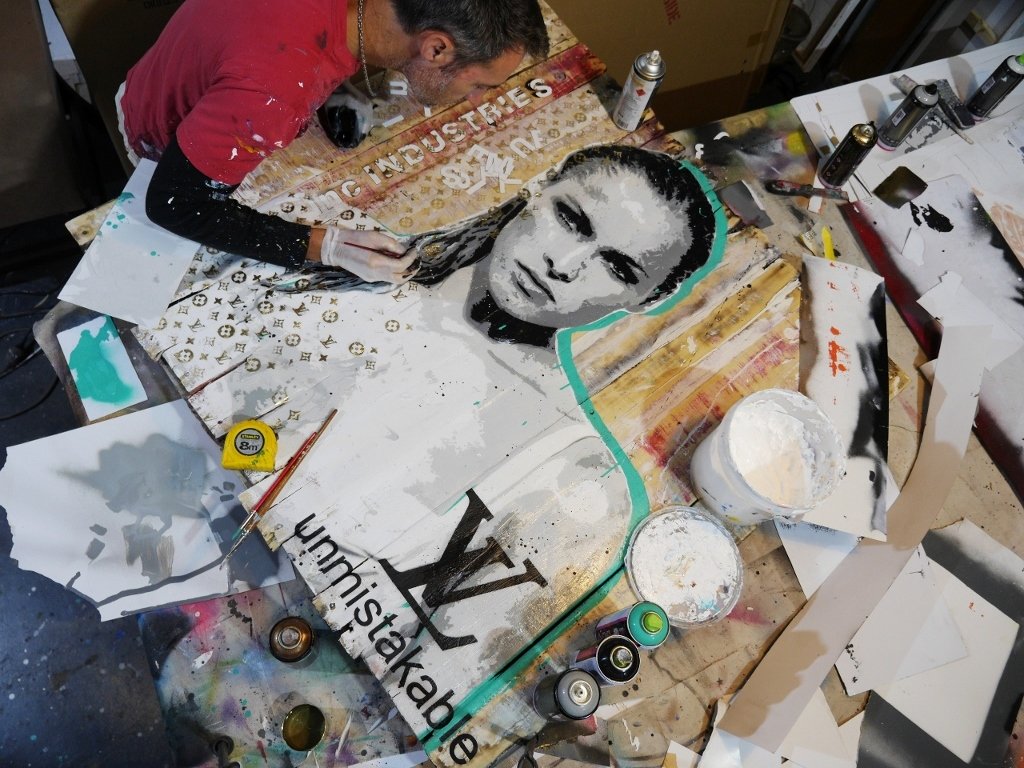
Best seller Franko mixes it up between abstracts and pop art, which keeps his work fresh and vibrant.
Marnie has a solution to this: “Change it up every so often. Whether by taking a day out to sketch, or collage, or try a new colour, it can make your usual style feel fresh when you mix it up a little. Some things work, some don’t, but it is worth trying as it encourages your creative process.”
6. Present professionally
This may seem simple, but sometimes it’s the most basic things that have the most impact! Show your artwork off as best you can with crisp, clear photos that show the colours accurately. You’d be surprised how wrong photos straight from the camera can look. It may sound like cheating, but a little Photoshop can go a long way. Have you ever taken a photo of a white wall only to have it turn out all grey? A quick brightening in Photoshop will make a huge difference. We’ve got some handy tips for improving your image quality here, but if in doubt talk to the team and we’ll be happy to share some more advice!

Dinah Wakefield uses her artwork description to clarify framing options and explain a little of the inspiration for the artwork.
Presenting well isn’t just about the quality of your photos! Every post on Instagram, every artwork description and especially your artist bio reflect on your brand. Proof read for typos, spelling mistakes and flow. Get some tips about writing the perfect bio here. If in doubt, keep it simple and clear.


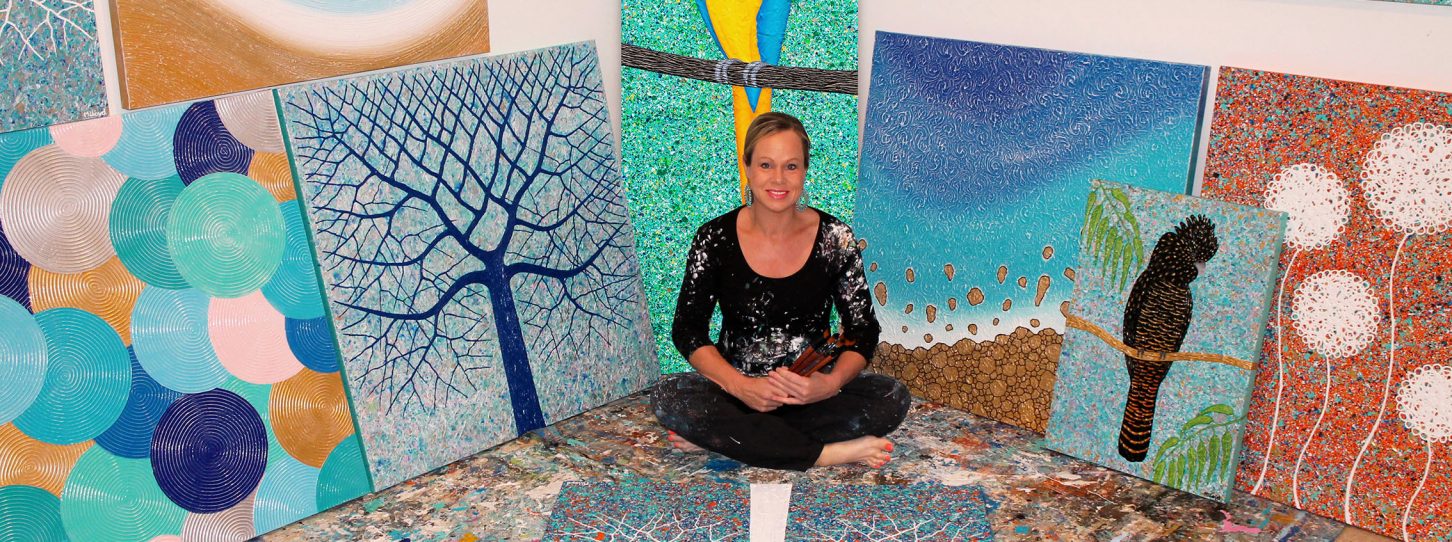










Thank you. Love the tips.
Thank you for these very helpful comments. I had much more success selling art last year and have struggled a bit this year. It is so good to have this advice from a successful artist that may help me know how to present my paintings better and create appeal with prospective buyers.
Great advice, thanks. I’ve seen a bunch of arguments about staying true to your style, but that’s not my style. So I will feel more comfortable changing it up now.
Wonderful tips as every little bit helps to create sales. Thank you
Those are some really great tips, I will make sure to apply those to my art! Hopefully will get more sales that way!
Very informative! Thank you .